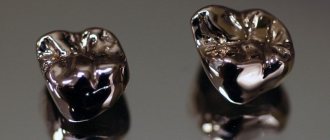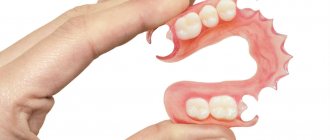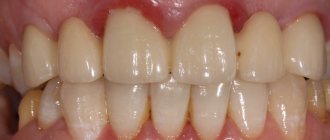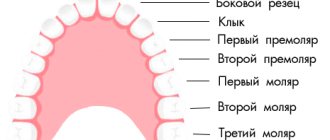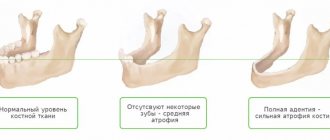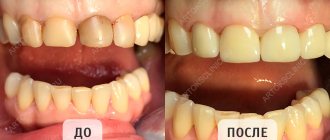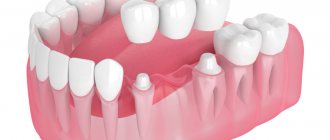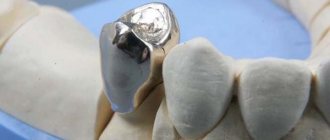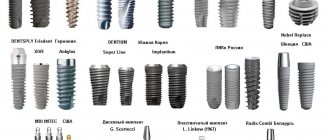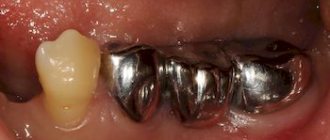Dental crowns in our clinic
At OWN PEOPLE dentistry, crowns are selected individually for each patient. Our doctors will take into account all the client’s wishes, including the appearance of the prosthesis. One of the main principles of the clinic is the availability of care. Therefore, when selecting a crown, dentists also focus on the patient’s budget and the cost acceptable to him.
All stages of manufacturing and installation of crowns are controlled by the attending physician. This ensures high quality and long-lasting wear of the prostheses. And after installation, the dentist conducts a detailed consultation on wearing and caring for the crown.
Free consultation!
Our clinic provides free consultations, during which the dentist will determine whether the patient needs a crown and outline a rough treatment plan. You can discuss with him the materials and methods of making prostheses in order to choose the most convenient one. The doctor will also tell you what procedures will have to be completed before installing a crown and what costs the patient should expect.
Indications for installation
Artificial crowns are installed in place of the destroyed part of the tooth. The procedure is carried out according to indications:
- more than 70% of the natural tooth crown is destroyed;
- inability to use other correction methods;
- there are large cracks and chips on the enamel;
- a fracture of the natural crown was established;
- high abrasion of enamel in the patient.
Temporary crowns are installed while the tooth is being treated. They allow you to maintain an aesthetic appearance and a beautiful smile.
Contraindications
Not all patients can have crowns. Contraindications to the procedure:
- the last stage of periodontitis - the prosthesis may fall out due to weakened jaw tissue;
- enamel fragility - due to the risk of tooth decay;
- Bruxism - increased tone of the jaw muscles during stress or sleep;
- small height of the teeth and their incorrect position - the crown will not hold;
- pathological bite with incisal overlap - artificial crowns will wear out and destroy healthy teeth.
For some crown materials there are age restrictions for use. Therefore, only a doctor can choose the right prosthesis during a personal consultation.
Our advantages
At the OUR PEOPLE clinic, they value the health of their patients, so doctors install crowns only when indicated. If this method of prosthetics is not suitable, the dentist will select another correction method. An individual approach and attention to each patient is the key to high quality medical care at the SVOI PEOPLE clinic. Thanks to this, our clients wear dental crowns for many years.
Indications for dental prosthetics with bridge structures
Bridges are a non-removable orthopedic structure that is fixed to supports that limit the defect on both sides.
Bridges may be indicated if:
- Included dental defect, no more than 3 units in length;
- Lack of other options for restoring the integrity of the bite using another design or implantation;
- Replacement of a previously installed bridge.
What are they: materials
Crowns can be made from a wide range of materials. Some of them contain a metal base, others are completely synthetic. The choice of material depends on the purpose of the crown, wearing time, wishes for appearance and financial capabilities of the patient.
Metal ceramics
Crown with a metal frame and ceramic coating. The material is reliable and aesthetically pleasing. But there are several contraindications to metal-ceramic dental crowns:
- gum recession - the denture becomes visible;
- age under 18 years - thin enamel in children, which is why there is a risk of injury to the pulp when grinding the tooth.
For the adult population, metal-ceramic crowns are considered an excellent option for correcting dentition.
Metal composite
The product has a frame made of an alloy of cobalt and chromium, and a photopolymer composite is used for cladding. The crown is formed in a soft state and then hardens under the light of an ultraviolet lamp.
The result is a thin and durable coating. But the photopolymer composite is colored by bright pigments in food and drinks, so the patient will have to limit himself in consuming such products.
Golden
The material, tested by time and many patients, is gold. It is a precious metal, so it is hypoallergenic. Such products are perfect for people with high sensitivity to foreign materials.
Gold is a soft metal, which is why crowns quickly wear out under the pressure of antagonists. But they do not spoil the enamel of healthy teeth.
Zirconium dioxide
The most modern material for making crowns is zirconium dioxide.
| pros | Minuses |
| High strength; | High price. |
| Aesthetics; | |
| Hypoallergenic; | |
| Long service life. |
In terms of the ratio of advantages and disadvantages, this material is the most optimal of all possible. But the high price is not for everyone.
Metal-free
Modern techniques for making crowns make it possible to avoid metals in the composition of the product. This is especially important for those who are allergic to them, and you don’t want to lose aesthetics by installing a gold model.
Ceramic
Ceramic crowns are the most similar to natural teeth. They have a sufficient degree of transparency, and can also be matched in color to match natural enamel.
But such crowns are fragile and fragile. Therefore, they are used for the front teeth, and for the back teeth you will have to choose a different material.
Porcelain
Porcelain crowns are not as popular, but they have many advantages.
| pros | Minuses |
| Anatomical shape; | Fragility; |
| High accuracy; | High price; |
| Comfortable wear; | Loose fit; |
| Strong fixation; | High risk of destruction of adjacent teeth. |
| Minimal risk of loosening; | |
| High aesthetics; | |
| Durability; | |
| No staining; | |
| Resistance to temperature changes; | |
| Hypoallergenic. |
In terms of the ratio of pros and cons, porcelain products win in many respects. But people with thin enamel are not recommended to have them installed due to the risk of damaging healthy teeth.
Combined
Models made from combined materials are suitable for long-term wear. They can be used for teeth with any location: they are aesthetically pleasing for the front ones and can withstand the load of the back ones.
Such products are not without drawbacks. They quickly wear out and wear out, and can become deformed. But this is a fairly budget option for prosthetics.
Plastic
The products are only suitable as a temporary tooth replacement. They are light and comfortable, their production takes little time and does not require a large budget. While the permanent structure is being prepared, you can use plastic crowns, but you won’t be able to wear them for a long time - they simply won’t withstand the load.
What dentures are the best and most comfortable?
Each prosthetic structure has specific characteristics that determine its scope of application.
For upper teeth
The incisors and canines experience less stress compared to the chewing teeth, and they are also within sight. For their prosthetics, the optimal types of fixed prostheses are crowns, adhesive bridges made of zirconium dioxide, glass-ceramics, and metal-ceramics. Molars and premolars are practically invisible, so it is advisable to install durable, inexpensive metal or combined dentures instead. For minor defects, veneers and lumineers are placed in front, and inlays are placed in the back.
Crowns on front teeth
For the bottom
The lower front teeth, like the upper ones, are also located in the smile zone, so fixed structures for them should be as aesthetic as possible. You can save a little on unobtrusive chewing dental units, so the recommendations are the same as in the previous paragraph.
With partial absence of teeth
In such cases, single defects are corrected with cantilever or adhesive bridges. You can also install immediate dentures during a two-stage implantation process. Severe edentia requires the installation of high-quality clasp dentures; you can also try a removable sandwich.
With complete edentia
Most often, inexpensive plate structures are used, but they deform the gums, do not hold well, and cause discomfort. The optimal solution in this case is complete dental implantation.
For temporary prosthetics
In such cases, immediate prostheses are usually used. Cantilever structures can also be used as non-permanent ones.
For children
Which dental prosthetics will be best for a child depends on the specific situation. Typically, children need butterfly dentures during the period of changing teeth to correct the dentition.
| Problem | Suitable prosthesis | Min. price, rub. |
| Upper and lower jaw: Minor, single defects of the anterior and posterior teeth | Ceramic veneers, lumineers | 8000-30000 |
| Zirconium crowns, 1 pc. | 30000 | |
| Metal-ceramic crowns, 1 pc. | 10000 | |
| Metal crowns, 1 pc. | 5000 | |
| Metal-ceramic bridge, 3 units. | 36000 | |
| Glass-ceramic bridge, 3 units. | 72000 | |
| Partial edentia | Adhesive bridge | 13000 |
| Cantilever bridge | 18000 | |
| Clasp prosthesis | 35000 | |
| Completely edentulous | All-on-4 | 400000 |
| All-on-6 | 500000 | |
| Temporary prosthesis | Metal-ceramic crown | 10000 |
| Changing teeth in children | Immediate prosthesis | 3000 |
Types and methods of making a crown
Products differ not only in service life and materials of manufacture, but also in appearance. The doctor selects the appropriate option during a personal consultation, since an in-person examination of the patient is required.
Bridges
The design is relevant for patients who are missing more than one tooth. In this case, a complex prosthesis is made, the parts of which are connected by a bridge. It is attached to healthy teeth, thus holding crowns. This method is not used for single prosthetics.
Implant supported crowns
If the patient has already installed implants, they can be used as a support for the crown. This will avoid unnecessary stress on healthy teeth and prevent their wear. But if the patient does not have implants, this technique cannot be used.
Crown for one tooth
Most often, patients come with a request to install a crown on one tooth. This is relevant for single destruction from caries or injury. The method of installing a crown is selected based on the condition of the gums, periodontium and bone plates. In some cases, additional operations are required before installing the structure.
Fixation with a pin
A method that is used less frequently than others is placing the crown on a pin. This is a traumatic operation that can cause serious complications. Therefore, they try to abandon this method if alternative methods are available to the patient. If not, the operation is carried out in several stages with constant medical supervision at each of them.
Cast crowns
The most reliable and durable designs are cast crowns. They are made from a single piece of material. The product is highly durable and lasts longer. But this manufacturing technique is not suitable for all materials.
Stamped
To stamp crowns, a dental anvil is used, the processes of which follow the shape of the teeth. To get a stamp, use rubber rings. To make metal crowns, hammers of various sizes and shapes are used. The final form of the prosthesis takes place after processing with special forceps.
Such dentures are cheaper to produce than cast ones. But they are easier to deform and wear out faster. The service life of such prostheses is much shorter.
Metal crown
Dentures began to be made from metal almost 100 years ago. Initially, preference was given to gold - crowns were made from it quite simply, but were too soft. Gradually, a special gold-based alloy began to be used for crowns - the addition of other metals makes it possible to achieve high strength of the product.
Nowadays, dentists use not only precious metals (gold and silver) to make crowns, but also “base” metals: titanium and steel. All metal crowns have a rather low aesthetic quality - the presence of gold teeth in the mouth currently does not make a person beautiful. In addition, the cost of such products is actually not considered one of the lowest.
How a tooth crown is made
Before you start making a crown, you need to decide on its shape and size. To do this, do:
- visual inspection;
- overview and targeted x-ray;
- 3D – computer visualization of a model of the jaw and tooth.
Making a crown for a tooth depends on its type, the material used and the production method. An impression of the patient's jaw is taken as a sample. They are sent to the laboratory to create a plaster model. After drying, the master cuts out the desired element and makes a prototype of it from wax.
Then the resulting model is fixed on the base and filled with a specialized mixture. In this state it remains in the oven for 4-5 hours. Then the mold is taken out and, while it is still hot, filled with alloy. Until the moment of hardening, the future artificial tooth remains in such a position so that its deformation does not occur.
Installation process
The procedure for installing a crown is multi-stage. Often the patient has to visit the doctor more than two or three times. It all depends on the initial condition of the teeth and their sensitivity to the therapy, if necessary.
At the initial stage, the doctor conducts a diagnosis, determines the plan and scope of work, and calculates the approximate cost. Often at this time it is still unclear how long the treatment will take, because each body reacts to therapy in its own way.
Laboratory stage
Most of the steps involved in installing a crown take place in the laboratory. At this stage:
- obtain dismountable models of jaws from plaster;
- make a stamped crown;
- grind and polish the product to an ideal shape.
The laboratory accompanies the patient at all stages of installation. The crown can be returned for revision even at the very last moment, since it is important that the patient feels comfortable wearing it.
Grinding the tooth before installation
The most difficult stage, which most patients fear, is teeth grinding. It is necessary to ensure that the crown fits perfectly to the gums. If this is not observed, a pathological pocket will form. Food will get stuck in it, which will cause inflammation and can lead to tooth extraction.
Grinding is carried out under anesthesia, so the patient will not feel anything. Only the top layer of enamel is ground. The tooth itself is not damaged; only 1-2 mm are removed. The depth of work depends on the selected crown material: a smaller volume is sufficient for ceramics, while metal-ceramics require more space.
The purpose of grinding is to equalize the width of the tooth at the neck and at the equator. This is necessary for strong fixation of the crown. It is covered by the gums, which prevents loosening. After processing, there should be no convex parts left - they are sanded off with a special apparatus. At the same time, the chewing teeth must maintain their relief in order to fully perform their functions.
In some cases, during turning, depulpation is additionally performed. This is done according to strict indications, about which the patient is warned in advance.
In case of extensive tooth decay, a stump inlay can be installed. It protects healthy soft tissues from the pressure of the crown on them. Previously, in this case, installation was carried out using pins. Now this technique is not so relevant, since the operation is associated with certain risks. And if it is possible to avoid them using a stump tab, it is better to do so.
Installing a crown on a tooth
A permanent crown is not installed immediately. First, a fitting is carried out, during which the patient evaluates several parameters:
- shape;
- wearing comfort;
- color.
If one of the parameters does not fit, it is better to redo the crown. After all, you need to remember that it will take a long time to wear it, and the cost of manufacturing and installation is usually expensive.
And the appropriate crown is securely fixed with cement. The strength of the installation is checked by a doctor to ensure that the prosthesis does not accidentally fall out.
Monitoring the situation after installation
Once the crown is in place, you need to check whether the installation was completed correctly. To do this, a panoramic or targeted photograph of the oral cavity is performed, depending on the number of installed dentures. Only after this the doctor allows the patient to go home.
If a patient has questions about discomfort or inconvenience when wearing a crown, he can call the doctor at the OWN PEOPLE clinic and ask all his questions. Our dentists care about their clients and are always responsible for the results of the procedure.
Pros and cons of crowns
It is impossible to call the installation of crowns a uniquely positive procedure. It has a number of contraindications and disadvantages. But there are much more advantages from it, so it has not lost its relevance for decades.
Advantages
There are significantly more positive aspects of crown prosthetics than negative ones. The advantages of the procedure include:
- maintaining the health of the tooth when it is partially destroyed;
- restoration of chewing function of the jaws;
- protection against tooth decay with removed pulp;
- restoration of intelligible and clear speech;
- possibility of crown replacement;
- restoration of the aesthetic appearance of the smile.
A large number of advantages outweigh some of the disadvantages of the procedure. But they are still worth considering before deciding to install.
Flaws
Like any medical procedure, crown placement is not without its drawbacks. Its disadvantages:
- significant grinding of healthy tooth tissue;
- the procedure is not performed if the root is damaged;
- limited crown service life;
- the need for regular monitoring by a doctor.
Despite the number of shortcomings, dental crowns remain popular and in demand. This is an effective way to restore the integrity of your smile and jaw function without significant financial investment.
Metal-ceramic crown
In search of a compromise between the unaesthetic appearance of metal and the insufficient strength of ceramics, dentists developed metal-ceramic dental crowns. During their manufacture, a ceramic coating is applied to a metal base, masking the metal, while the metal base provides sufficient strength and rigidity. The advantages of such structures include:
- reasonable cost;
- natural appearance;
- strength comparable to conventional metal prostheses.
Disadvantage: when the gum recedes, the metal part of the crown appears from under it, which reduces its aesthetic value.
If it hurts under the dental crown
Installing a dental crown is a complex operation. Therefore, after it, pain may be observed for 2-3 days. This is a normal reaction of the body to intervention. Therefore, doctors recommend taking painkillers during this period.
If your tooth hurts for a week or more, you should consult a doctor for a second examination. It is possible that a pocket has formed between the gum and the crown where food has entered. This can cause inflammation. In this case, you need to start treatment as early as possible so as not to lose the tooth.
Metal composite crowns
Another attempt to combine metals and non-metals in dental crowns is metal composite crowns. Their peculiarity lies in the manufacturing method - a light-curing composite is applied to a metal base. A new tooth is formed, similar to a real one. Such dental crowns are very attractive from an aesthetic point of view; they look very good both in place of the front teeth and in the place of chewing teeth.
But there are more disadvantages than advantages.
